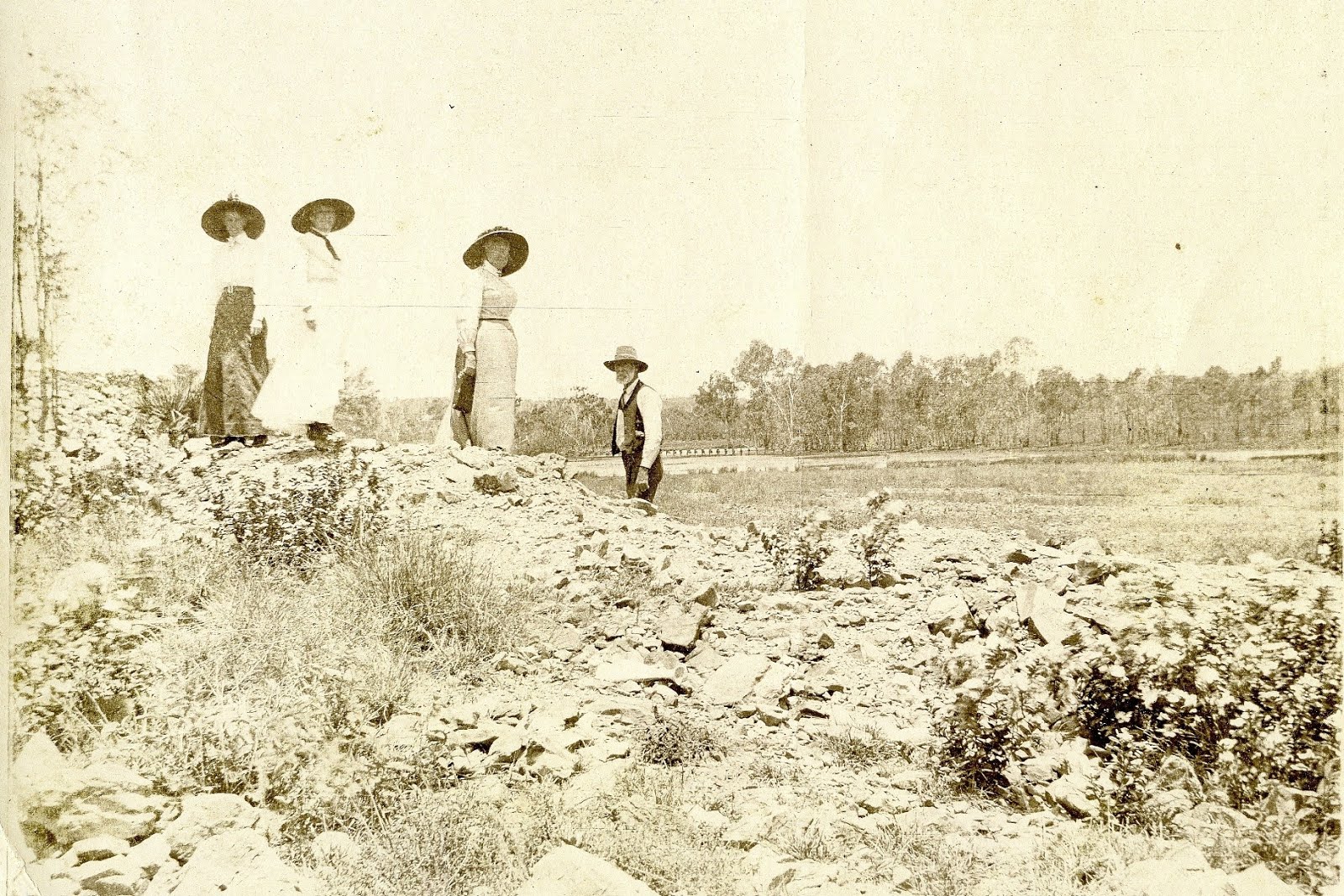 |
| JOHN CLARK WITH WIFE AND DAUGHTERS. LATE 1890'S. Source: Personal Collection. |
John, Jane and Mary Ann (their baby daughter) arrived at a
staging post on the Queensland border three months after leaving the Hunter
Valley minus the police posse. For those
who don’t know geography, Queensland is a state of Australia. It’s our version
of Texas.
It was at the staging post that John Clark showed his
bravery and canniness when he agreed to drive a mob of cattle (for a good price
and the fact that no one else wanted to do it) north to a station near the
settlement of Bowen. The town had only been established one year before. Was he
crazy? After here, there were barely any settlements or roads for a thousand
miles. Most of the land north had only just been explored by Europeans. Bowen
was a long way away and the Aborigines whose land he would be passing through
were known to be hostile.
 |
| ABORIGINES. Source: blueswarmi.com |
John Clark had such
an air of confidence about him that several men decided to join his party. But
John Clark had a clever idea about dealing with hostile Aborigines. Two local
Aborigines, a male and female named Roddy and Billy who he had befriended,
agreed to come with him. As the party travelled north, Roddy and Billy were
able to negotiate safe passage through the different tribal lands they passed
through.
Things did get a little sticky one night when they
thought their camp would be attacked. Even Billy and Roddy were worried. Roddy
apparently told John Clark to grab, “the stick that goes ha-ha.” (his exact
words). Roddy was of course referring to a gun. John Clark fired a shot over
the heads of the Aborigines and they quickly dispersed.
After several months on the road everyone arrived in
Bowen alive and well. Impressed by the
good condition of the cattle, John Clark
was made manager of the station.
As for Roddy and Billy? They would remain with
John and his family the rest of their lives. Billy delivered several of John
Clark’s children at Lornesleigh Station and Roddy is buried next to John Clark.















